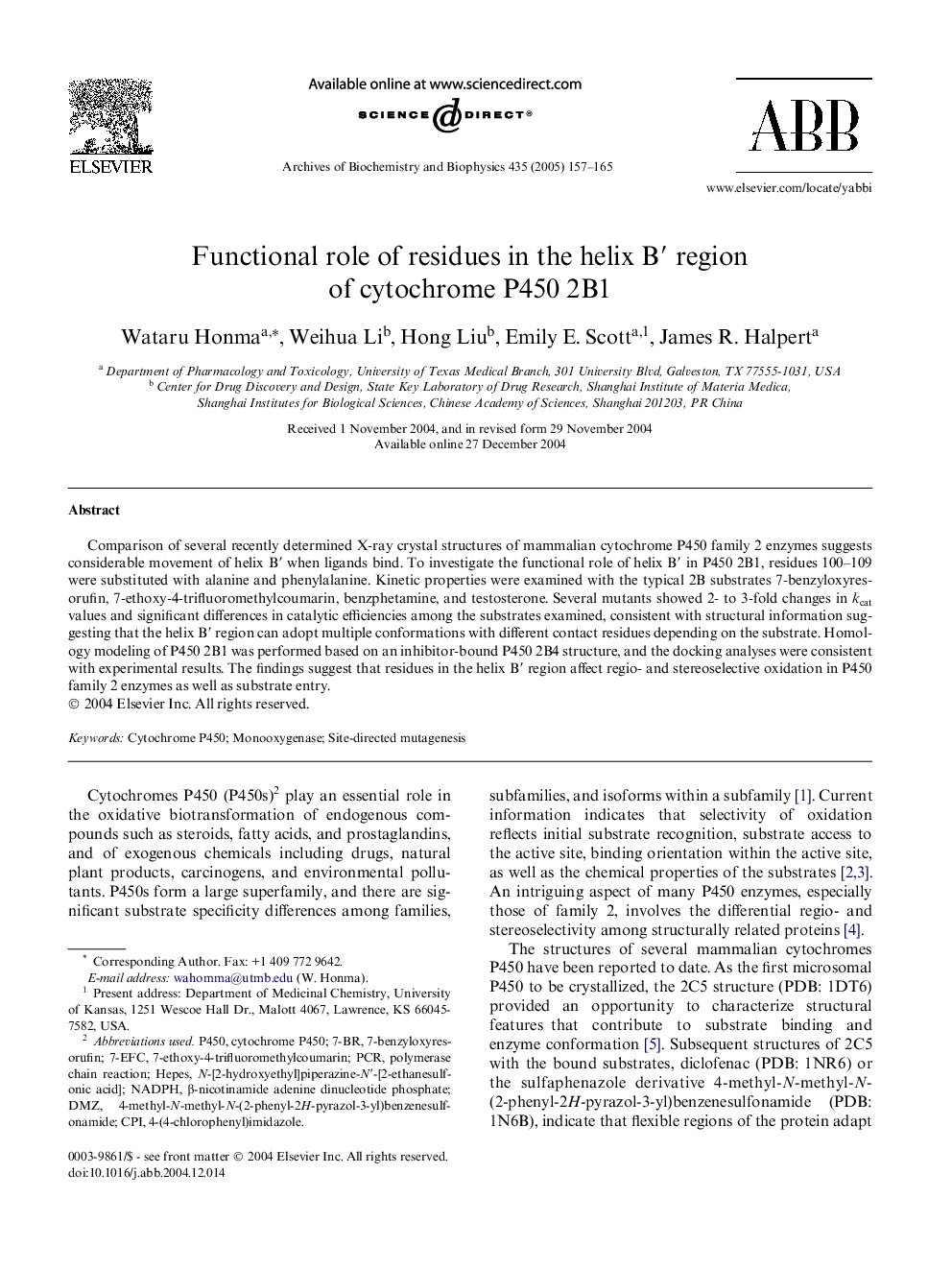| Article ID | Journal | Published Year | Pages | File Type |
|---|---|---|---|---|
| 9882317 | Archives of Biochemistry and Biophysics | 2005 | 9 Pages |
Abstract
Comparison of several recently determined X-ray crystal structures of mammalian cytochrome P450 family 2 enzymes suggests considerable movement of helix Bâ² when ligands bind. To investigate the functional role of helix Bâ² in P450 2B1, residues 100-109 were substituted with alanine and phenylalanine. Kinetic properties were examined with the typical 2B substrates 7-benzyloxyresorufin, 7-ethoxy-4-trifluoromethylcoumarin, benzphetamine, and testosterone. Several mutants showed 2- to 3-fold changes in kcat values and significant differences in catalytic efficiencies among the substrates examined, consistent with structural information suggesting that the helix Bâ² region can adopt multiple conformations with different contact residues depending on the substrate. Homology modeling of P450 2B1 was performed based on an inhibitor-bound P450 2B4 structure, and the docking analyses were consistent with experimental results. The findings suggest that residues in the helix Bâ² region affect regio- and stereoselective oxidation in P450 family 2 enzymes as well as substrate entry.
Related Topics
Life Sciences
Biochemistry, Genetics and Molecular Biology
Biochemistry
Authors
Wataru Honma, Weihua Li, Hong Liu, Emily E. Scott, James R. Halpert,
